The Alert Fatigue Crisis Plaguing IT Teams
IT operations teams across enterprises are drowning in alerts. A typical large organization might receive thousands of notifications daily from disparate monitoring tools, creating alert fatigue – critical issues get lost in the noise of false positives and redundant warnings.
During a recent Cloud Field Day presentation, HPE demonstrated how their OpsRamp platform attempts to address this widespread problem. The company’s approach reflects a growing recognition that simply adding more monitoring tools isn’t solving the fundamental issue of information overload in modern IT environments.
The Current State of IT Operations
Organizations typically manage hybrid environments spanning on-premises data centers, multiple cloud platforms (AWS, Azure, GCP), and cloud-native applications. Each component often requires its own monitoring solution, leading to siloed tools where network, server, and storage teams operate independently.
This fragmentation forces teams into time-consuming manual correlation efforts, often requiring “war rooms” to piece together the complete picture during incidents. The result is slower resolution times and increased operational costs.
HPE’s “Monitor of Monitors” Strategy
Rather than asking organizations to replace their existing monitoring investments, HPE positions OpsRamp as a “monitor of monitors” – a centralized platform that aggregates data from existing tools. HPE claims integration capabilities with over 2,500 third-party solutions, including popular tools like SolarWinds, ScienceLogic, Dynatrace, and New Relic.
This approach addresses a key concern for IT leaders: how to leverage existing technology investments while improving operational efficiency. OpsRamp ingests alerts from these external tools via webhooks, creating what HPE calls a “central IT Ops command center.”
OpsRamp offers flexible deployment options to accommodate different organizational needs:
- Monitoring Flexibility: The platform provides both agentless monitoring (using gateways to collect data via SNMP, APIs, and SSH) and agent-based monitoring with a lightweight Go-language agent designed to minimize server overhead.
- Data Consolidation: The system captures metrics, events, logs, and traces across hybrid environments, creating a unified data lake.
- AIOps Integration: Perhaps most significantly, OpsRamp includes a native artificial intelligence engine designed to correlate and deduplicate alerts automatically.
The Promise of AI-Driven Operations
HPE’s most ambitious claims center around OpsRamp’s AI capabilities. The platform’s machine learning algorithms attempt to group related alerts into single “inference alerts,” theoretically helping teams identify root causes more quickly.
For example, when a network switch port failure triggers multiple downstream alerts, OpsRamp’s AI aims to recognize these as related events and present them as a single incident with the probable root cause identified.
HPE claims that with its AI capabilities its customers typically see a 90-95% reduction in alert volume.
Automation and Remediation Features
Beyond alert management, OpsRamp includes automation capabilities designed to resolve common issues without human intervention. The platform uses a workflow engine that can execute PowerShell or Python scripts, potentially automating responses to routine problems.
The system includes governance controls, allowing organizations to require approval before automated scripts run on production infrastructure. This addresses a key concern about automated remediation: maintaining control while benefiting from speed.
Recent additions include AI-powered HPE Copilot functionality, which allows users to generate dashboards using natural language queries rather than complex query languages.
Pricing and Licensing
HPE provides OpsRamp on a tiered subscription basis, with billing options available for monthly or 1-, 3-, or 5-year terms. The core of the pricing is determined by the number of resources that HPE OpsRamp is monitoring. HPE broadly defines a resource; it can include a physical server, a virtual machine (VM), a container, a network device, a wireless access point, or public cloud resources. For some resource types, HPE applies a 4:1 ratio for metering purposes, meaning four such items (like wireless access points or containers) count as one OpsRamp resource.
Beyond the resource count, customers are allocated 50 metric series per resource. If the total aggregated metrics ingested exceed this allocated amount, overage charges apply, although the platform guarantees that it never drops data; instead, customers are right-sized monthly for any excesses. The volume of ingested data (measured in gigabytes per month) is also a factor, with HPE applying overage charges if the customer surpasses their allocated volume.
Navigating a Crowded Battlefield: Competition and Critical Success Factors
OpsRamp enters a competitive market that includes established players like Splunk, Datadog, and ServiceNow, as well as newer entrants focusing on AIOps capabilities. The IT operations management space is experiencing significant consolidation, with organizations seeking platforms that can reduce tool sprawl while improving operational efficiency.
The success of OpsRamp’s approach will likely depend on several factors: the accuracy of its AI correlation algorithms, the reliability of its automation features, and its ability to integrate seamlessly with existing enterprise tools without introducing new complexity.
The Integration-First Approach: HPE’s Strategic Response to IT Operations Complexity
HPE’s OpsRamp platform represents a pragmatic response to one of IT operations’ most persistent challenges: making sense of an overwhelming flood of alerts and monitoring data. Rather than forcing organizations to abandon their existing monitoring investments, HPE has chosen the path of integration and consolidation—a strategy that acknowledges the reality of enterprise IT environments where multiple tools are not only common but necessary.
The addition of AI-powered automation and natural language dashboard generation through HPE Copilot indicates the company is betting on conversational interfaces and intelligent automation as key differentiators. Yet the success of these features – and OpsRamp overall – will ultimately depend on their reliability, accuracy, and the degree of control they provide to IT teams wary of black-box solutions.

